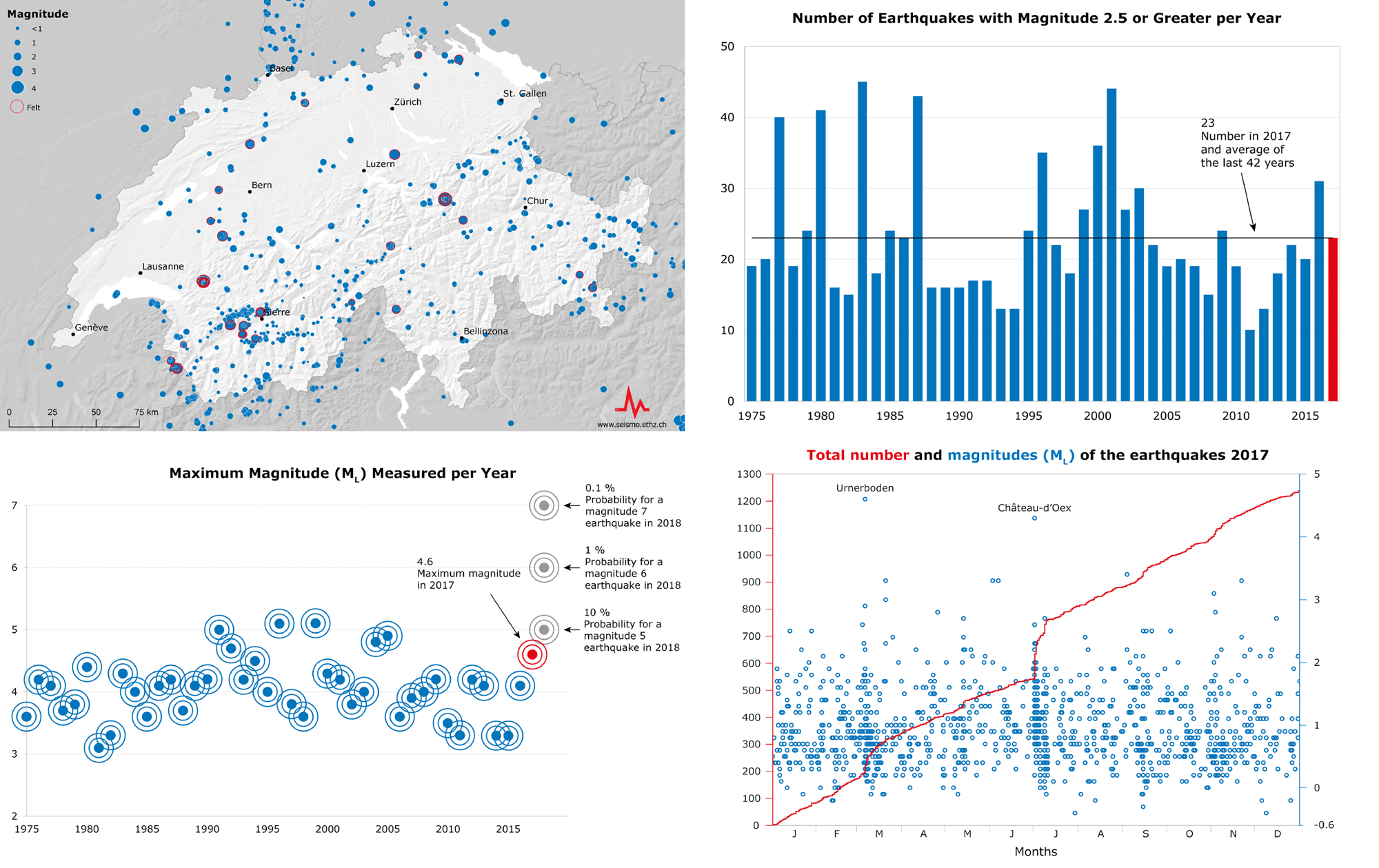2018-01-25
Earthquakes in Switzerland in 2017: an overview
Seismic events in 2017 once again showed that Switzerland is an earthquake country. There were two widely felt earthquakes with magnitudes above 4 and hundreds of aftershocks. Furthermore, the Swiss Seismological Service (SED) at ETH Zurich recorded more small quakes than ever before. In all, some 1'230 earthquakes were registered in Switzerland and its neighbouring countries in 2017.
Read more...On 3 March 2017, Switzerland was shaken by the strongest earthquake in more than 10 years. The earthquake with a magnitude of 4.6 occurred near Urnerboden in the border area between Uri, Schwyz and Glarus. It was felt in many parts of Switzerland and caused some minor damage to buildings near the epicentre and 100 aftershocks. The last earthquake larger than this, with a magnitude of 4.9, occurred on 8 September 2005 near Vallorcine (France) just across the Swiss border close to Martigny (VS). A second widely felt earthquake in 2017 took place on 1 July near Château-d'Oex (VD). This earthquake had a magnitude of 4.3 and triggered approximately 240 aftershocks, some of which were also felt.
Overall, in 2017 the SED registered and located more events than ever before: around 1'230 earthquakes in Switzerland and its neighbouring countries. More than 700 of these were microearthquakes, with magnitudes of less than 1.0 to -0.4. Such earthquakes are becoming increasingly “visible” in some parts of the country thanks to the improvement of Switzerland's seismic measuring system, which is making an important contribution towards gaining a deeper understanding of the structures and processes in the country's subsurface. In 2017, 23 earthquakes occurred with magnitudes of 2.5 or higher, in line with the average for the past 42 years. The earthquake activity was concentrated mainly in the Valais, Grisons and the area along the Alpine front.
Furthermore, earthquakes were clearly felt last year by sections of the Swiss population near Vallorcine (France) on 20 March (magnitude 3.0), near Sion (VS) on 2 June and 5 August (with magnitudes of 3.3 and 2.4 respectively), as well as near Zug (ZG) on 21 November (magnitude 3.3).
Year-by-year fluctuations in earthquake frequency are normal and do not permit conclusive forecasts of future seismicity. As a rule, damaging earthquakes with a magnitude of 6 occur in Switzerland once in every 50 to 150 years. The probability of this occurring in 2018 is therefore about 1 percent.
